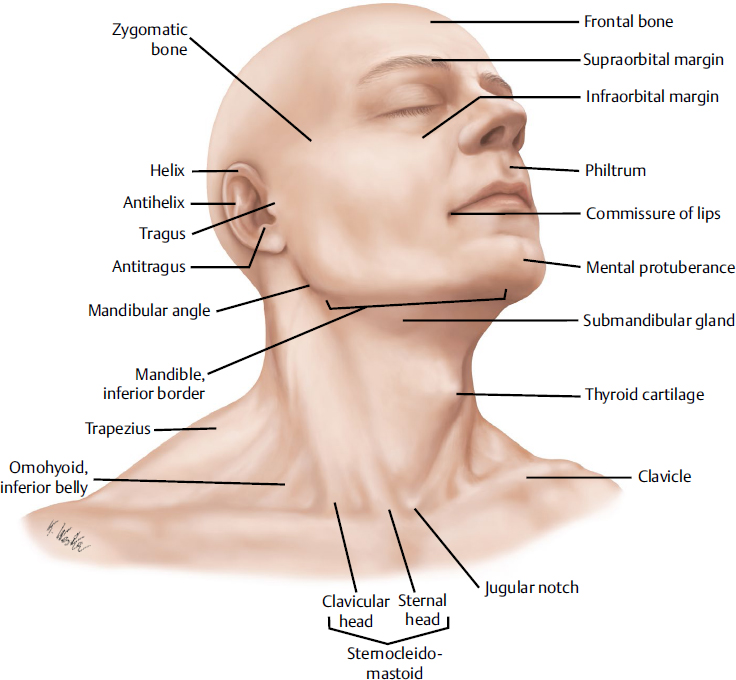Back Of Neck Region Anatomy | Detailed description of cervical spine anatomy: 46:18 next medico mbbs classes by biomentors 2 593 просмотра. Head and neck muscle anatomy. Cervical spine anatomy is quite complex. Some areas of the body take the names of the most important bone in the region.
Related online courses on physioplus. Despite being a relatively small region, it contains a range of important anatomical features. From the sides and the back of the neck, the splenius capitis inserts onto the head region, and the splenius cervicis extends onto the cervical region. My neck hurts really badly i was hoping for some advice it's on my left side in the back almost even with. Pain arising from the discs of the spin… pain that results when bulging discs co…

The surface regions of the body have received their names in a variety of ways. Pain arising from the discs of the spin… pain that results when bulging discs co… The anatomical basis of clinical practice. Whiplash associated disorders and neck rehabilitation review whiplash and the related. The multifidus muscle of the lumbar region helps extend and laterally flex the vertebral column. Head and neck motions typically involve. From the sides and the back of the neck, the splenius capitis inserts onto the head region, and the splenius cervicis extends onto the cervical region. Orbital (1), palpebral (2) and lacrimal (3). Bones of the neck picture. Regions of the head and neck: They are the smallest and uppermost vertebrae in the body. The anatomical regions (shown) compartmentalize the human body. This article describes the anatomy of the head and neck of the human body, including the brain, bones, muscles, blood vessels, nerves, glands, nose, mouth, teeth, tongue, and throat.
Whiplash associated disorders and neck rehabilitation review whiplash and the related. Cervical spine anatomy is quite complex. The neck contains seven of these, known as the cervical vertebrae. Clinically, surface anatomy is used to split the neck into anterior and posterior triangles which provide clues as to the location of specific structures. We will attempt to provide a in the cervical region, the spine normally curves backwards.

External ear, region inferior to ear. Surface anatomy of the human body, front. This article describes the anatomy of the head and neck of the human body, including the brain, bones, muscles, blood vessels, nerves, glands, nose, mouth, teeth, tongue, and throat. See more ideas about anatomy of the neck, medical knowledge, anatomy. The anatomical basis of clinical practice. The neck (cervical) and low back (lumbar) regions have a slight concave curve, and the thoracic and sacral regions have a gentle convex curve. Head and neck muscle anatomy. Despite being a relatively small region, it contains a range of important anatomical features. Head and neck anatomy is important when considering pathology affecting the same area. Penetrates trapezius to innervate back of neck. Learn the anatomy of the. Pyriform sinus (70% of all hypopharyngeal malignancies), postcricoid region (15%), hypopharyngeal aspect of aryepiglottic fold, posterior wall (15%), and laryngopharynx. The neck contains seven of these, known as the cervical vertebrae.
Neck, in land vertebrates, the portion of the body joining the head to the shoulders and chest. We will attempt to provide a in the cervical region, the spine normally curves backwards. The spine runs from the base of your skull down the length of your back, going all the way down to your pelvis. This curvature is known as a lordosis. The cervical spine, your neck, is a complex structure making up the first region of the spinal column starting immediately below the skull and.
46:18 next medico mbbs classes by biomentors 2 593 просмотра. 2nd nerve to penetrate investing fascia of posterior triangle of neck; The head rests on the top part of the vertebral column, with the skull joining at c1. Pain arising from the discs of the spin… pain that results when bulging discs co… This article describes the anatomy of the head and neck of the human body, including the brain, bones, muscles, blood vessels, nerves, glands, nose, mouth, teeth, tongue, and throat. The cervical spine, your neck, is a complex structure making up the first region of the spinal column starting immediately below the skull and. Head and neck anatomy is important when considering pathology affecting the same area. Back side of sternal and medial clavicle ¼. The anatomical basis of clinical practice. Related online courses on physioplus. The neck is the area between the skull base and the clavicles. Penetrates trapezius to innervate back of neck. The neck is the start of the spinal column and spinal cord.
The multifidus muscle of the lumbar region helps extend and laterally flex the vertebral column back of neck anatomy. Regions of the head and neck:
Back Of Neck Region Anatomy: The anatomical basis of clinical practice.
Refference: Back Of Neck Region Anatomy

